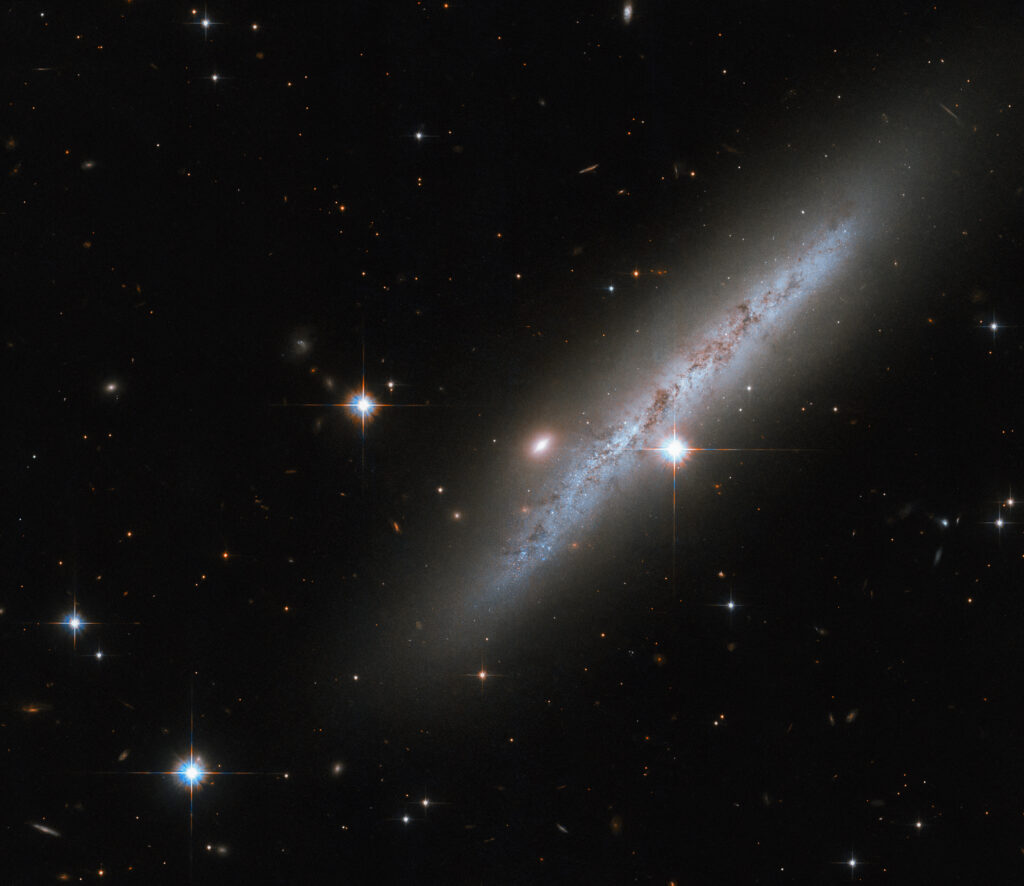The Hubble Mission Support Group has published a new colorful image. It shows the galaxy UGC 2890, which has become home to one of the brightest events in the Universe.

The galaxy UGC 2890 is located at a distance of 30 million light-years from the Milky Way in the direction of the constellation Camelopardalis. Similar to our Milky Way, it is classified as a spiral galaxy. Despite the fact that we see UGC 2890 from the “edge”, some elements of its spiral structure can be seen in the Hubble image, as well as characteristic dark dust bands.
In 2009, a supernova broke out in UGC 2890. It has been classified as Type II. Such events occur as a result of the collapse of the cores of giant stars, which have at least eight times the mass of the sun. They lead to the formation of neutron stars or black holes.
Despite the fact that the supernova has long since faded away, astronomers sent Hubble to UGC 2890 to study its surroundings. Researchers are particularly interested in the age and masses of neighboring stars. This knowledge can help them better determine which types of luminaries end their lives with Type II supernova outbreaks. In addition, astronomers are interested in the presence of “survivors”: the former companions of the exploded star, which could survive its death.
Earlier we talked about how astronomers found an intermediate-type supernova.
According to https://esahubble.org
Follow us on Twitter to get the most interesting space news in time
https://twitter.com/ust_magazine

